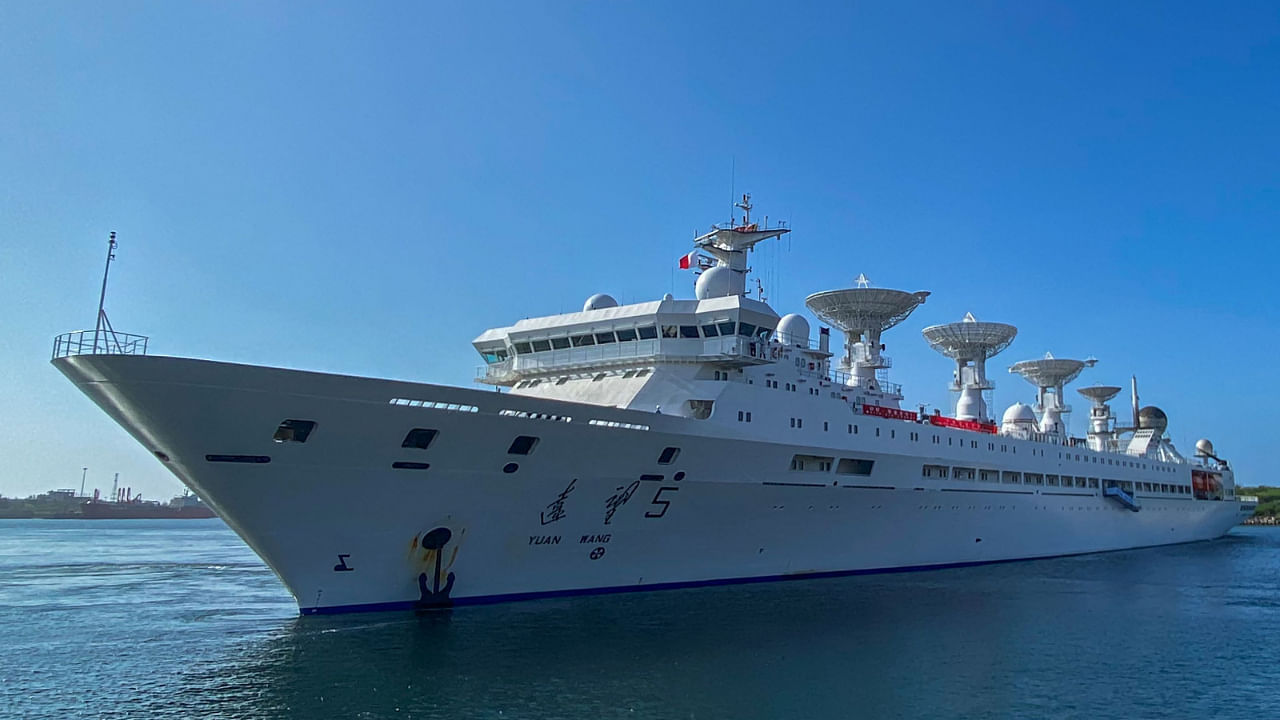
China's Yuan Wang 5 research vessel docked at Sri Lanka’s Hambantota port on Tuesday, purportedly for replenishment purposes and is slated to be at the port from Aug. 16 to 22.
The ship's arrival has sparked considerable controversy, especially with India raising security concerns to Sri Lanka about potential Chinese espionage. Although India made its concerns clear, the island nation chose to grant the Yuan Wang 5 permission to dock, albeit at a date later than the originally proposed arrival date of Aug. 11.
Let's take a deep dive into the capabilities of the Yuan Wang 5, the strategic importance of the Hambantota Port where the ship is anchored, and India’s concerns about the same.
What are the ship's capabilities?
A third-generation vessel in a series of ships that entered service in 2007 to support China’s manned space programme, the Yuan Wang 5 is 222 metres in length and 25.2 metres in width. It's a satellite and missile tracking ship with state-of-the-art technology.
Also Read | China asks India not to 'obstruct' research by its ship, refrains from committing more aid to Sri Lanka
The Yuan Wang 5 can carry out transoceanic aerospace observation using satellite pictures, can track the launches of satellites, rockets and intercontinental ballistic missiles, and can send information to tracking stations in Beijing and across China, according to an India Today report.
Having been in service for months now, the Yuan Wang 5 has an excellent track record. The ship’s last monitoring mission was the launch of China’s Long March 5B rocket last month. It was recently involved in maritime monitoring of the launch of the first lab module of China’s Tiangong Space Station, said a News18 report.
China said that the Yuan Wang 5 was a research ship but the US Department of Defense said the vessel was under the command of the Chinese Navy, formally known as the People’s Liberation Army Navy, according to an Outlook India report.
Why is the Hambantota Port important?
Sri Lanka’s second largest port after the Port of Colombo, Hambantota began operations in 2010 before it was privatised and leased to China for 99 years in 2017, something that many hold to be an outcome of China’s 'debt trap' diplomacy.
The Hambantota Port is located 10 nautical miles from a key global shipping route between the Malacca Straits and the Suez Canal that connects Asia with Europe, a route used by 36,000 ships annually, including thousands of oil tankers. Due to its proximity to the route used for a considerable chunk of the maritime oil trade, the Hambantota Port is one of Sri Lanka’s most diversified deep-water ports.
Additionally, the Hambantota Port’s proximity to the tip of southern India makes it strategically important, especially with regard to long-range reconnaissance and espionage.
What are India’s concerns?
Given the state-of-the-art instrumentation on board the ship and its reported aerial observation range of 750km, the ship’s presence in Hambantota, at least on paper, could allow it to spy on defence installations in southern India.
China could potentially use the Yuan Wang 5 to spy on ports and military installations in Tamil Nadu, Kerala, and Andhra Pradesh, as well as on the nuclear power plants in Kalpakkam and Kudankulam, with the latter being India’s largest nuclear power station, said the India Today report.
India's Minister of Ports, Shipping and Waterways Sarabananda Sonowal declared on Aug. 14 that India was ready to handle any security threat arising out of the ship's presence in Sri Lanka, saying, "We are well equipped and well prepared to handle any kind of situation effectively under the dynamic leadership of Prime Minister Narendra Modi. That is clear."